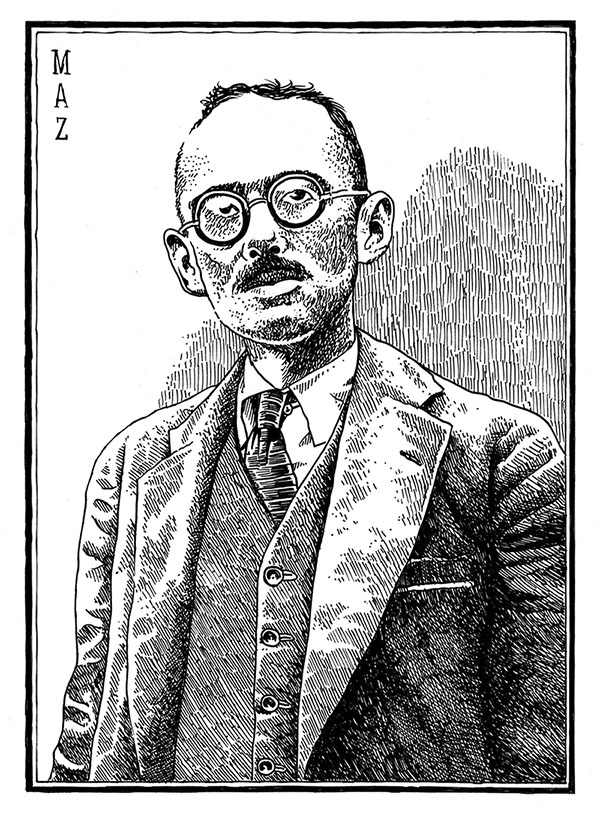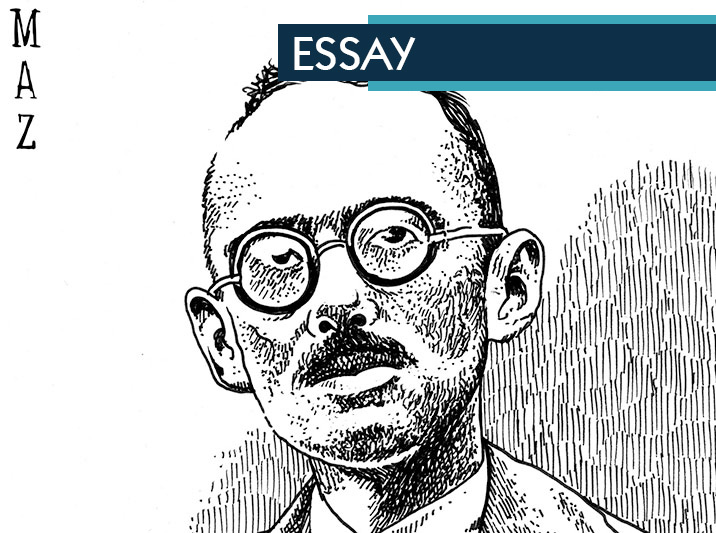

The German Condor Legion, fighting on behalf of General Francisco Franco’s Fascist forces in Spain’s Civil War, destroyed the small Basque town of Guernica on the morning of April 26, 1937.
It was a market day and the people of the defenseless town were peacefully going about their lives. Nevertheless, over a period of almost three hours, three waves of the German warplanes attacked the town. The first wave dropped bombs. The second wave concentrated on machine-gunning the people of Guernica on the roads as they fled their homes. The third wave dropped incendiary bombs designed to ignite fires amid the debris caused by the first wave of bombing.
Guernica was well behind the front lines and had no military value. The attack was solely a laboratory experiment. It was designed to discover the destructive capacity of Germany’s newly developed Stuka dive-bombers and test the concept of war against cities from the air.
From the German perspective, it was a great success. Over 70% of the buildings in Guernica were destroyed. This was similar to the destruction percentage at Hiroshima and Nagasaki resulting from the later atomic bombing of those Japanese cities.
The world was horrified at the destruction. So, too, was American poet and fiction writer Stephen Vincent Benet. By 1937 the prolific Benet was an established and well-known author. Indeed, he had already published the two works that would secure his reputation for later generations. The first of these was John Brown’s Body, an epic book-length poem cycle published in 1928 about the American Civil War. It won the Pulitzer Prize for poetry in 1929.
The second was his 1936 short story, “The Devil and Daniel Webster,” an allegorical tall tale in the humorous style of Mark Twain. In it, Daniel Webster, the famous New Hampshire lawyer and political leader, successfully defends a neighboring farmer who had sold his soul to the Devil. The trial for the farmer’s soul is presided over by the very judge Hathorne who presided over the Salem witch trials. The biased jury that the Devil assembles to hear the case is comprised of such desperate and despicable characters as Edward Teach, better known as the pirate Blackbeard. Even so, Daniel Webster’s eloquence is so persuasive that this jury of the damned is moved by it and rules in favor of the farmer’s salvation.
“The Devil and Daniel Webster” proved to be immediately popular, winning an O. Henry Award in 1937. It was also made into a 1941 movie, for which Benet himself co-wrote the screenplay, starring Walter Huston as the Devil.
Benet died of a heart attack in 1943 at the too-young age of 44, but in his short career he wrote screenplays, five novels, and many collections of poetry. At the time of his death he was working on another epic book-length poem cycle covering the birth and growth of America entitled Western Star. He posthumously won the poetry Pulitzer Prize for this work in 1944.
Benet also published around 120 short stories, many of them in The Saturday Evening Post, a leading slick magazine of the day. Some of them were highly political, reflecting Benet’s strong anti-Fascist sentiments. Among the strongest of these are “Into Egypt” and “The Blood of the Martyrs.” Another powerful story expressing his political views is “Freedom’s a Hard-Bought Thing,” depicting the life of an antebellum Southern slave who, after much hardship, escapes to freedom in Canada via the Underground Railroad.
His poetry, steeped in the Left Populism of the day (which also found expression in the songs of Woody Guthrie), often reflected his political concerns. Some of the strongest of these poems include “Nightmare at Noon,” which warns America of the rise of Fascism, “Litany for Dictatorships,” “Ode to the Austrian Socialists,” “Listen to the People,” and “American Names.” The last of these ends with the memorable line, “Bury My Heart at Wounded Knee,” which would become the title of a pioneering history by Dee Brown of the Indian wars told from the Indian perspective.
In addition, although Benet never published in the genre fantasy or science fiction magazines of his day, some of his stories, like “The Devil and Daniel Webster,” were fantasies or outright science fiction. “The Devil and Daniel Webster,” for instance, was so popular that he wrote two more such fantasy adventures of Daniel Webster, neither, however, as popular as the first.
In “Johnny Pye and the Fool-Killer,” another frontier tall tale, Johnny Pye outwits Death itself, the “Fool-Killer” (as all humans are fools), who had come for him in the guise of a man.
Another such homespun fantasy is “Doc Mellhorn and the Pearly Gates.” In this tale, the humble small-town general practitioner Doc Mellhorn dies in his sleep after a long and worthy life attending to the medical needs of his neighbors. Mellhorn, of course, goes to Heaven, yet he hesitates at the Pearly Gates because everyone in Heaven is perfectly healthy, and so there is no need for a doctor such as himself. Instead, he drives his rattletrap Model T down to Hell and sets up a practice there, as there are plenty of the damned in Hell who need a good doctor.
Doc Mellhorn is so successful in his practice that the Devil begs him to leave, as he is alleviating too much of the justified suffering of the damned. Doc Mellhorn is persuaded to return to Heaven, as those who first arrive there are sometimes also in need of a doctor. However, he makes occasional return visits to Hell to tend to the damned.
“The King of the Cats,” written in 1929, departs from such frontier fantasies to tell a story of high society. In this Benet work, a maestro of the European classical music world visits America on a much-acclaimed tour to conduct the leading orchestras. No one can compare with his command of the orchestras and mastery of the music, which he conducts with his long and lustrous tail.
It seems that the maestro is, in fact, a humanoid cat, a fact that does not deter all the leading ladies from falling in love with him. He, however, finds lasting love only with a mysterious contessa who, we later discover, is also a humanoid cat.
Benet’s 1935 story, “The Curfew Tolls,” is a masterpiece of alternative history. It is also a thoughtful exploration of the importance of events and circumstances in the making of the so-called “Great Man.” Here, an alternate history’s Napoleon Bonaparte is born too soon and lives a life of frustrated obscurity and minor military accomplishment, serving in the royal army of the French king.
This Napoleon dies in 1789, virtually unknown and unlamented, of the stomach cancer that in “our” reality killed the great man in his St. Helena exile. At the very same time, the French Revolution, which would have brought Bonaparte to prominence in our world breaks out.
There is also Benet’s wonderful science fiction poem, “Nightmare Number Three,” which humorously describes a revolt of all of humanity’s machines. The human narrator in this tale believes that the machines will need maintenance, and so hopes they will keep some humans, such as himself, around as slaves.
Into this world of imagination and literary accomplishment came the destruction of Guernica by the Condor Legion’s new type of warfare, death from the air. It powerfully affected Benet. He was a writer, and he responded as a writer, one with political feelings and an affinity for imaginative extrapolation. He wrote a powerful and explicit story depicting the future of such warfare, and he published it three months later in his usual short story market. “The Place of the Gods” appeared in The Saturday Evening Post on July 31, 1937.
In this story, Benet described a “Great Burning,” when fire fell from the sky and, for many years afterward, “the poison was still in the ground.” Modern civilization was destroyed, mighty cities were turned into ruins, and, in North America, the few survivors of such warfare lapsed back into a pre-Columbian level of civilization. The unnamed protagonist of the story is the son of the tribe’s shaman. He sometimes goes with his father to the “Dead Places,” as the ruined cities of the “gods” of old are called, to forage for metal and other useful artifacts.
Then comes the time for the protagonist’s vision quest, the Native American ritual which transitions a young man into adulthood. Following the signs of eagles flying east he comes to a great river, which we know to be the Hudson. He builds a raft and floats downriver to the “Place of the Gods,” the mightiest of the “Dead Places,” which we soon realize is the remnants of New York City. There he wanders through the deserted streets and the empty and demolished buildings. He explores strange places we realize to be the ruins of Wall Street and Grand Central Station.
He finally climbs the stairs of one tall building and spends the night in the penthouse apartment of one of the dead gods. It overlooks the ruined city and, that night, his vision comes to him. In it, he sees the great city below him returned to its glory days, before the Great Burning, when the gods turned night to day and rode the city in myriad chariots. Then he sees the Great Burning itself, when the fire fell from the sky and a poisoned mist covered the city.
The next day, in an adjacent room, he discovers the mummified body of one of the gods, sitting in a chair looking out a picture window onto the devastated city. He realizes at last the gods were not gods at all, but men such as himself. He also comes to understand that the places of the gods had been the cities of mere men, like himself. In these cities there is great knowledge to be found and his vision has told him to return to his people with that discovery.
The story is that of what Joseph Campbell would later call, “The Hero’s Journey,” in which a young man goes forth into the world, undergoes great trials, and returns to his people with new knowledge.
Our hero does return to his people and, when his father dies, becomes the shaman of his tribe. Little by little, he reveals the knowledge of the Dead Places to his people. Now, he says, “It is not for the metal alone we go to the Dead Places. There are the books and the writings. They are hard to learn. And the magic tools are broken, but we can look at them and wonder. At least, we make a beginning. They were men who built the city, not gods or demons. They were men who were here before us. We must build again.”
Later in 1937 Benet published a collection of his stories, Thirteen O’Clock: Stories of Several Worlds. In it he included his new story, with the title changed to “By The Waters of Babylon,” a reference to Psalm 137. It has been known by that title ever since.
In 1943, Donald A. Wollheim chose the story for inclusion in his path-breaking The Pocket Book of Science Fiction, the first notable paperback science fiction anthology. Wollheim thus guaranteed its inclusion in the science fiction canon.
Here, then, in a story published years before Hiroshima and Nagasaki revealed their own Great Burning to the world, we have the prototype for many of the clichés of 1950s’ post-nuclear holocaust science fiction. Those stories would play variations on the theme but would not add much beyond the nuclear nature of the Great Burning that destroys civilization.
Appalled by the horrors of his own time, Stephen Vincent Benet foretold the future and saw worse to come. It was to be a future of a worldwide war and the further threat beyond that of a nuclear holocaust that could destroy all of civilization.
But Benet also saw beyond such destruction and believed that, despite such devastation, humanity would endure. And, despite it all, as he avowed in the last words of his story, “We must build again.”













